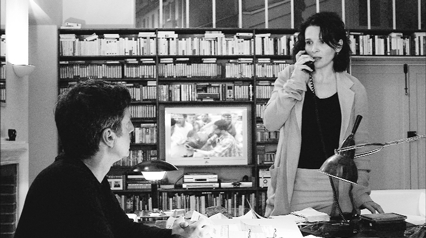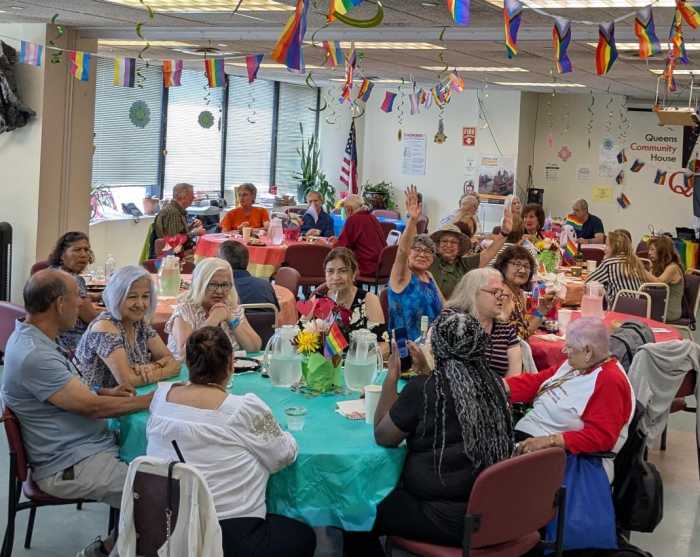Surveillance nightmare manifest in Michael Haneke’s “Caché”
Michael Haneke’s never come across a genre he didn’t want to implode—family melodrama in “The Seventh Continent” and “The Piano Teacher,” horror in “Funny Games,” science fiction in “Time of the Wolf.” With “Caché,” he’s made a thriller that retains all the form’s tension while offering little of its satisfactions and catharsis. Its mysteries start with surveillance tapes sent to TV host Georges (Daniel Auteuil) and spiral out from there, taking in his past and France’s troubled history with its former Arab colonies.
Post-film conversations about who sent the tapes—watch the final shot very carefully—are inevitable, but Haneke makes one do a lot of work for tenuous, ambiguous conclusions. Georges, who hosts a literary chat show called “La Table Ronde,” lives with his wife Anne (Juliette Binoche), an editor, and their teenage son, Pierrot (Lester Makedonsky.) Their complacency is disrupted by the arrival of the anonymous videotapes, depicting lengthy, static views of their house. Many of the tapes are accompanied by childlike drawings of bloody figures. The police refuse to do anything, since Georges’ family faces no physical threat. Eventually, Georges receives clues that lead him to a figure from his past, but this causes him to descend into mistrust and paranoia.
Haneke has a love/hate relationship with genre. He synthesizes the thriller with the art film brilliantly in “Caché.” If he’s often critical of his chosen forms, he’s clearly done his homework and can mimic them extremely well. As for television, where he toiled for 15 years, his suspicion verges on phobia—in “The Seventh Continent” and “Funny Games,” it’s essentially a villain. Ironically, Georges—a man who makes his living being filmed—is horribly frightened by surreptitious videotaping. However, the film pivots around control of the gaze. Georges’ fear is a product of the young looking critically at the middle-aged and Arabs looking back at Europeans. In “Caché,” it’s a given that filmmaking is an act of aggression.
Although Haneke, who’s originally from Austria, now works mostly in France, there’s still something stern and archetypically Germanic about his films. He has a great eye for set pieces condensing the maximum amount of dread into the minimum amount of space. The lighting and cinematography are precise, stylish, and as sterile as an Ikea showroom. His tendency to film long scenes in one take—“Funny Games” includes one ten-minute shot—only makes them tenser. “Caché” includes the most nerve-wracking elevator ride ever filmed, even though its characters’ only danger is mental.
The greatest achievement of “Caché” is turning an ordinary part of cinema’s grammar—the establishing shot—into an image of horror. This begins with the very first scene, in which the unusual shot length and lack of camera movement are eventually revealed to be surveillance video. The anonymous taper favors similar shots of Georges’ house. Soon, one comes to suspect that every establishing shot, peaceful as it may be, is part of his plan—until context establishes that it’s not.
Haneke’s mix of moralism and sadism can be off-putting. “Funny Games” castigates its audience for indulging violent fantasies that he, after all, thought up. The one really flawed scene in “Caché” depicts a young boy killing a chicken. Edited for maximum shock value, it’s a moment more befitting ‘70s exploitation schlock than the rest of the film. Oddly,
Haneke, who’s often reticent about killing fictional people on-screen—preferring to suggest violence through sound design—has few qualms about genuine animal slaughter, which happens in three of his films. On the other hand, the other sadistic indulgence of “Caché” is far more justifiable—one of the year’s most powerful and disturbing scenes, it’s sure to have the entire audience cringing in unison.
Before “Caché,” “Code Unknown” was Haneke’s most overtly political film. Gentle compared to the rest of the work, but still deeply pessimistic, it seemed both anti-conservative and anti-liberal. The central metaphor of “Caché” can be taken many different ways. Some observers have seen it as a reflection on 9/11, although the film refers specifically to a 1961 massacre of Algerians by French police. News footage of Iraq, which Georges and Anne mostly ignore, plays as background noise as well. Georges’ generation may be doomed to live out a legacy of racism, guilt, and worse, but the film holds out the possibility that their children might have another destiny. Ultimately, I’m not sure that it matters who sent Georges the tapes; their impact on him and his family is far more crucial.
If “Caché” is Haneke’s masterpiece, that’s largely because its ellipses offer something more than a passive-aggressive means of manipulating the audience. At long last, it suggests the possibility of escaping from the submerged doom central to his vision of middle-class European life. Amazingly, it manages to do so without forcing this interpretation on us—diluting the devastating 1-2-3 punch of the final scenes, in which Georges essentially sinks into hell—or making vanquishing racism look easy.
gaycitynews.com





































